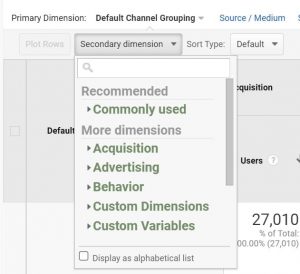I recently read Eliav Lankri’s case study published on Medium where he tells the story of his innocent customer, a jewelry store owner, who never having dealt with SEO, suddenly became a victim of a “sophisticated” negative SEO attack.
And the attack made his website vanish from the search results, dropping his revenues for a few weeks before the organic (still not full) traffic returned.
So negative SEO happens, and in a competitive business niche, the risk of being attacked by malicious online competition does exist. Of course, it’s not possible to unmask them, but you need to be cautious as “the forewarned is forearmed.”
This is why I assume you’ll find it useful to learn more about the problem of negative SEO and how to protect your website.
So, black hat SEO techniques might be used on purpose by unethical and malicious competitors who want to sabotage the quality and rankings of your website.
By definition, we can describe negative SEO as the exact opposite of search engine optimization. While the goal of the latter is to make your website rank high in the search results, negative SEO aims to devastate your site rankings.
Negative SEO includes:
– hacking a website in order to damage it,
– writing reviews to look as if they were paid for,
– buying hundreds of spammy links for a competitor’s website
– distributing your content over the internet to cause duplicate content issues
– ruining your social reputation by fake profiles
– and then reporting black hat SEO tactics to Google
– and more…
Perhaps you heard this term before, but hopefully, you haven’t experienced it firsthand on your own website. How can you find out if someone is trying to attack you with negative SEO?
Let’s shed some light on negative SEO today.
Preventing is much easier than fixing. While you can’t control somebody’s malicious behavior, there are ways you can protect yourself and defend your website.
How to Prevent Negative SEO from Taking Place
1. Use Alerts in Google Search Console
Do you use Google Search Console? Yes? Magnificent! It gives you critical data and reports, like search traffic analytics, which can’t be generated anywhere else. It’s super useful stuff for improving your performance. Apart from that, you can also leverage Google Search Console to monitor your website’s safety. In particular, to detect abuse of any kind or sneaky manual actions.
React immediately thanks to alerts. Just go to the Google Search Console dashboard, click on the settings icon in the top, right corner of the page and click on Search Console Preferences.
Once you are there, enable email notifications. Now alerts will be automatically sent to your inbox. If anything happens to your website, you will get informed about it right away.
These notifications concern cases when your website is attacked by malware. Some of your pages vanish from indexation; server connection problems occur, or your website gets penalized.
2. Monitor Your Backlink Profile
Low-quality links and redirects manually added and pointing to your website are one of the most popular among negative SEO practices. This is why you should definitely monitor your backlinks so you can review your links profile on a daily basis. Positionly equips you with a backlinks tool that will help you control the situation. However, not all odd looking links have to be a result of negative SEO.
Anyway, once you spot any suspicious links, just go to its source to check it. Just to see if everything is cool.
On the other hand, you need to pay attention to your best backlinks and protect them, as the next standard negative SEO tactic refers to removing your most valuable links. Spammers contact website owners, they impersonate you and request the removal of your link. This is why you should always use your professional email for business communication. Don’t use the private ones because this can confuse your partners and make them believe that you are contacting them from @gmail or @yahoo. Tag your best backlinks and regularly check if they are still there.
3. Disavow Tool
Does your backlink profile contain spammy links? And by spammy, I mean containing an enormous amount of low-quality backlinks that cause your ranking to drop or even a penalty.
First, try to do all that you can to get rid of them. If you’ve contacted the website managers with a kind request to remove the spammy links pointing to your assets, and they’ve ignored it, you can count on Google to help you out.
Google has introduced a simple disavow tool that will help you remove the spammy links.
You just need to prepare an accurate document that meets their specifications, and you’ll be able to use the tool.
4. Check for Duplicate Content
Spammers will copy your content and try to distribute it all over the web. This is also one of the most common negative SEO tactics. Once they succeed, you’re in trouble and at risk of being penalized.
Use Copyscape to check if your assets are unique and to see who has reposted them. Remember, if a website publishes your article and adds the canonical URL, you are safe. It means that they’ve spread your word by sharing it, and not stealing.
Additionally, be cautious when it comes to the articles submitted by your contributors. Most of them will send you the fruit of their hard work, but sometimes it’s possible that the same content was published somewhere else, too. Or the author was strongly inspired by another person’s piece of writing.
We’re speaking of extreme cases here, but being cautious doesn’t harm anyone, and you don’t need to do it manually. Use a tool like Grammarly which will detect all the unoriginal parts of a text and show you their real source.
However, being 1% unoriginal is nothing bad. It happens. Content writers use similar phrases very often. Be aware of something along the lines of 20%.
5. Improve Your Password Protection
Take the security of your network seriously. None of us want to wake up one day without having control over our own website, right? Secure your site access from hackers and malware with passwords that are impossible to break.
Take the security of your network seriously. None of us want to wake up one day without having control over our own website, right? @positionly
Click to tweet
When generating passwords, try to incorporate a long sequence of numbers, mixed with small and large letters and special numbers. Collect them in your secret file on a separate device or in a secret notebook (and keep it under your pillow! :-)).
If you use WordPress CMS, it’s a good idea to strengthen your website protection using the Google Authenticator plugin for a two-factor authentication.
This app will make the login process more complicated. This way, anytime you need to login into your WordPress panel, you’ll be required to insert the chosen password along with the dynamically generated code sent directly to your smartphone. Google Authenticator can also be used with other tools like Dropbox, Gmail, Amazon, etc.
Another necessary thing to do is backup your database on a regular basis, especially before you update your WordPress version.
Website backups are vital for boosting your website’s security. Of course, your content is safely kept in your CMS, but you can’t control everything, and there is always a risk. Once it gets erased or corrupted, you may lose your precious content and be unable to do anything about it.
Creating backups will prevent this scenario from becoming a reality because you’ll be able to restore your assets. Don’t put your work at risk and remember to back it up.
6. Mentions Monitoring
On top of that, at times spammers create fake social media profiles to damage your brand image. Or you may have unhappy customers who actively complain about you on their social media profiles, and this also influences your brand reputation negatively.
Do you remember Target Troll, Mike Melgaard, who decided to create a fake customer success Facebook profile called “Ask for Help” and featured Target’s logo? He trolled Target “expertly and hilariously” and had a good reason to do so. Read more about this case on the Huffington Post along with the interview with the troll himself.
But we all know no business owner would like to wake up one day with their company’s fake account trending like that. So yeah, monitor all the social media channels and citations, and you will be notified about any mention of you or your company’s name. If you see someone impersonating your company, just report them immediately. Using a tool for social media monitoring will help you out.
7. Never make enemies
Negative SEO can also be the result of negative relations with customers. An outraged client with a strong motivation for revenge can make a big mess on the web. And you never know exactly who you’re messing with. So it’s good advice always to treat your customer relations professionally and politely; never, ever argue with customers. It can be tricky to handle some cases with the right dose of detachment, but don’t ever let a customer move you out of balance.
Calm customer service representatives that won’t treat customers’ messages personally will be golden for your organization.
8. Site speed
A sudden slowdown of your website may also be a negative SEO tactic. Spammers can send multiple requests to your server in order to have it taken down. So this is another aspect that you should be monitoring every day. For this issue, use a tool that can send you alerts informing you about your current website load speed and the server status.
9. Avoid black hat SEO
And by the way, are you sure that you aren’t doing bad SEO for yourself? Make sure you are not purchasing backlinks and overstuffing your articles with keywords. And don’t use other SEO tactics mentioned in these articles either:
Concluding
Summing up, I don’t intend to scare anyone with this piece of writing. Statistically, negative SEO doesn’t happen often, and some actions that might be perceived as malicious and a result of negative SEO attacks, often turn out to be something else.
But having basic knowledge on negative SEO and being cautious won’t hurt anyone. So just strengthen your password security; deliver excellent customer service; monitor your backlinks profile, Google search console reports, and your social mentions; and always check if anything suspicious is happening on the web – especially when your business niche is competitive. Apart from that, just try to live normally and not worry too much about possible negative SEO attacks.
What about you? Have you ever observed or experienced any kind of negative SEO? Tell us your story in the comments below.
New to SEO? Learn more about Search Engine Optimization!
Digital & Social Articles on Business 2 Community
(97)












